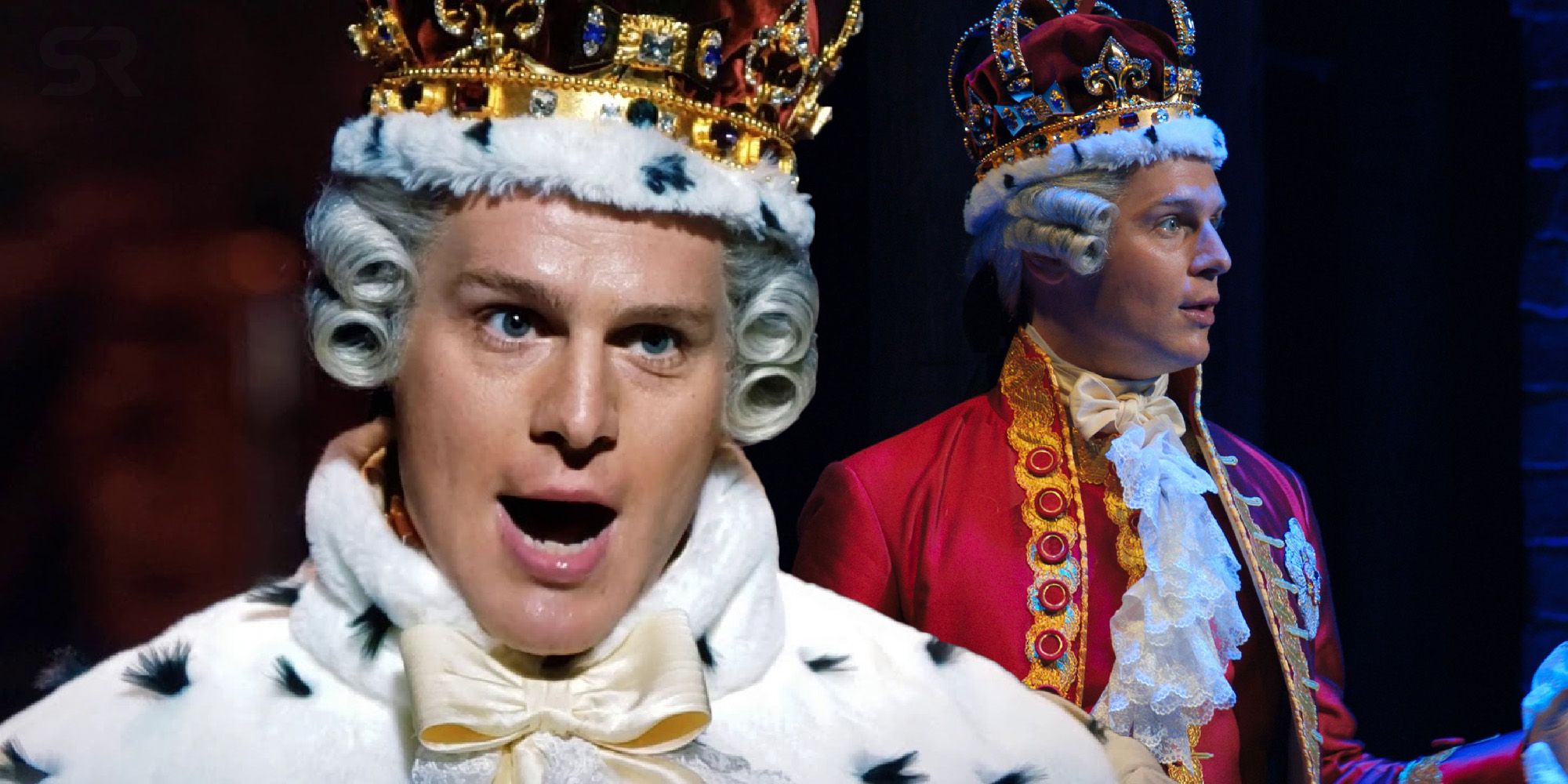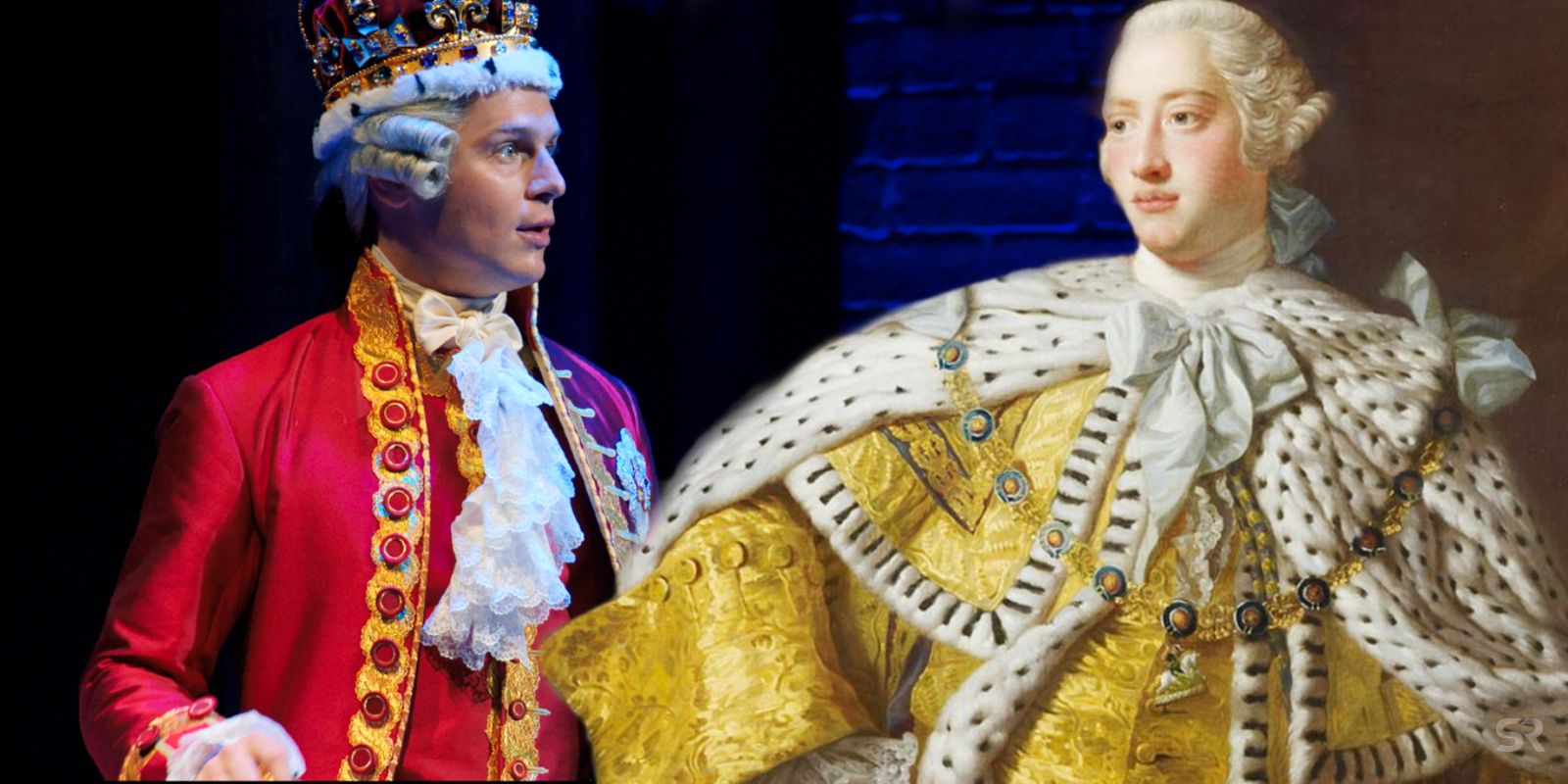In Hamilton, the choice to have King George croon a comical love song is as dark as it is humorous. Written by the award-winning Lin-Manuel Mirada, the composer borrows influences from British pop material of the 1960's to craft a tune that packs a punch, despite the character's relatively short stage time.
Performed with the original Broadway cast and in the musical's much-watched Disney+ version by actor Jonathan Groff (Mindhunter and The Matrix 4), the King George role is notable for his intentionally discordant cartoonish quality. Despite the relative seriousness of the overall piece, each of the king's appearances are met with an abundance of laughter. To help differentiate the character further, while much of Hamilton is punctuated with precise choreography (often enhanced by the useful turntable designed into the stage), all of King George's solo numbers are quite still. As King George enjoys his time in the spotlight, the motion of the play comes to a halt as the audience is forced to hang on the monarch's every spittle-producing word.
King George's signature song "You'll Be Back" — whose melody is revisited later in the show with two additional reprises — is littered with dark humor. In his first on-stage appearance, George alternates between doting and violent language as he sings to his rebelling American subjects. Angered and dejected that the king's "submissive" subjects are unwilling to obey him, the song eventually culminates in a rather ominous, but fitting, threat: "I'll kill your friends and family to remind you of my love." Such a power-play is, of course, consistent with an abusive relationship in which many victims find themselves cunningly isolated, forcing them to back into the arms of an overly-dominant partner. The metaphor is clear: America is in a sour and unhealthy partnership with her England.
Of course, this analysis is not inconsistent with real-life history. After all, England has a past marked with imperialism. In terms of history, Hamilton is set in a time in which the nation ruled over the thirteen American Colonies and additional North American regions, as well as colonies in South Africa and the Caribbean. In fact, many scholars partially attribute the American's ultimate success to the motherland's numerous endeavors abroad, which were fought simultaneously.
Interestingly, when King George — the physical embodiment of England — finishes his third and final solo, the character subtly joins the show's larger ensemble. In the Disney+ version, during Groff's background performance in the Hamilton's final song, "Who Lives, Who Dies, Who Tells Your Story," his ruby cloak and intricate royal crown have been traded for the less-flashy garb worn by the show's non-principal characters. The king's inclusion in this final scene may well be symbolic. Subtly hidden in the show's final tableau, the spectre of England's influence remains as the nation will continue on for better and for worse. As with all traumatic experiences, they stay with you on some level.
Therefore, King George sings a song about love, not because the love is genuine but because such language is often used as a tactic to achieve dominance. This dark read of what is at first glance a comedic crowdpleaser may be particularly unsettling in a show filled with an abundance of hope, passion, and celebration. However, as Hamilton is so preoccupied with defining the American identity and its oft-elusive legacy, the choice is thematically appropriate.


